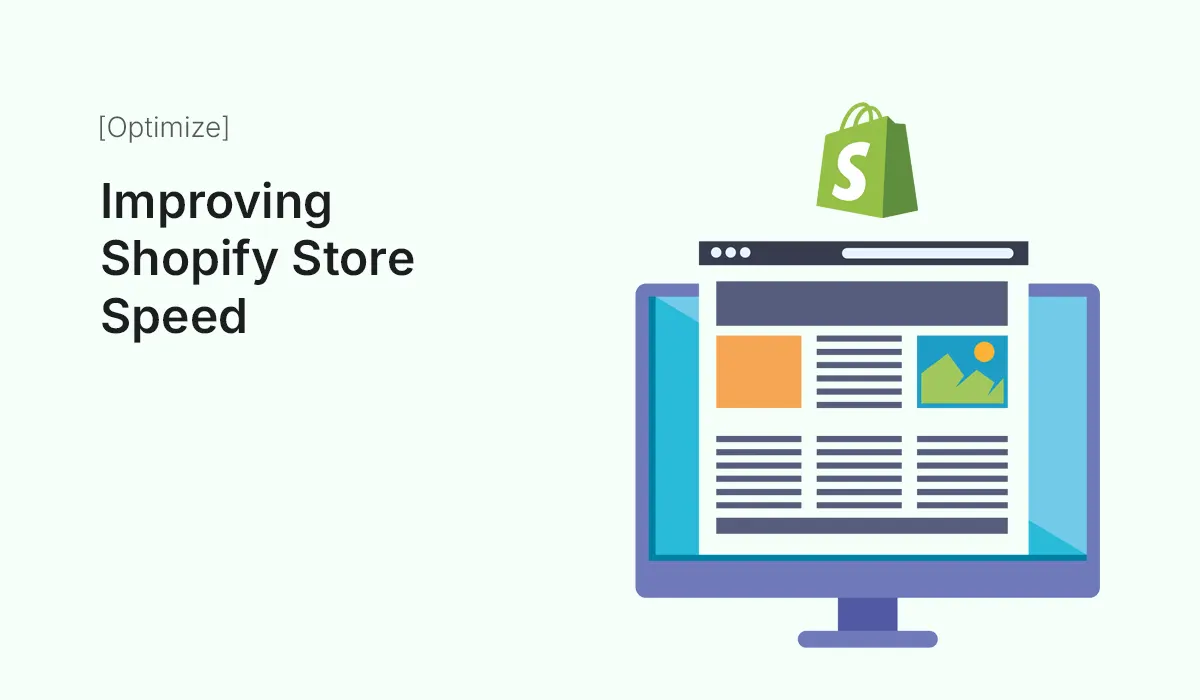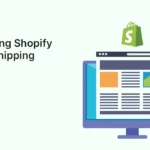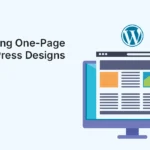Introduction
In eCommerce, every second counts. Research shows that 53% of mobile users leave a site if it takes more than 3 seconds to load. For Shopify store owners, this means speed isn’t just about user experience — it directly impacts sales, SEO rankings, and customer trust.
A slow Shopify store can lead to:
- Higher bounce rates
- Lost revenue
- Poor search engine visibility
- Negative first impressions
In this guide, we’ll dive deep into how to improve your Shopify store speed, covering common issues, optimization techniques, useful apps, and best practices. By the end, you’ll have a clear roadmap to make your Shopify store lightning fast.
Why Shopify Store Speed Matters
Conversions & Sales
Amazon once reported that a 100-millisecond delay costs them 1% in sales. While your store isn’t Amazon, the principle holds true: faster stores = more sales.
Search Engine Optimization (SEO)
Google uses page speed as a ranking factor. A slow site means lower rankings, fewer visitors, and reduced visibility.
Mobile Shoppers
Over 70% of Shopify traffic comes from mobile. Mobile users are less patient, making speed optimization even more critical.
User Experience & Trust
A slow site feels unprofessional and makes customers doubt reliability. A fast store signals trust and efficiency.
How to Check Shopify Store Speed
Before optimizing, you need to know your baseline. Here are tools you can use:
- Shopify’s Built-in Speed Report (Admin → Online Store → Themes → Speed Score)
- Google PageSpeed Insights – Shows mobile & desktop performance scores.
- GTmetrix – Provides waterfall charts to identify bottlenecks.
- Pingdom Tools – Test performance from multiple locations.
Tip: Run tests multiple times for accuracy.
Common Reasons for Slow Shopify Stores
- Large Unoptimized Images
- Too Many Shopify Apps Installed
- Bloated Themes with Unused Code
- Excessive JavaScript & CSS Files
- Unoptimized Fonts & Animations
- Too Many Redirects
- Not Using Browser Caching or CDN
Step-by-Step: How to Improve Shopify Store Speed
Optimize Images
- Use the right format: JPEG for photos, PNG for graphics, WebP for next-gen compression.
- Compress images with tools like TinyPNG, Kraken.io, or apps like Crush.pics.
- Resize images before uploading instead of relying on Shopify to scale them.
- Enable lazy loading so images load only when visible.
Limit & Optimize Apps
Every app adds scripts, CSS, and requests.
- Audit your apps: remove unused ones.
- Replace multiple apps with all-in-one alternatives.
- Use Shopify-native features instead of third-party apps where possible.
Minify CSS & JavaScript
- Remove unused code in your theme.
- Minify files using Shopify apps like Plug in Speed or custom development.
- Load scripts asynchronously to prevent blocking.
Choose a Lightweight Theme
Some premium Shopify themes come bloated with unnecessary features.
- Use optimized themes like Debut, Dawn, or minimal themes from the Shopify Theme Store.
- Avoid themes with too many animations or heavy sliders.
Use a Content Delivery Network (CDN)
Shopify already provides a CDN (powered by Fastly), but ensure your media and external scripts also use CDN when possible.
Reduce Redirects & Broken Links
- Too many redirects increase load time.
- Use Shopify’s URL Redirects tool wisely.
- Fix broken links using SEO tools or Shopify apps.
Limit Custom Fonts
- Stick to system fonts (Arial, Helvetica, Georgia) or minimal Google Fonts.
- Preload important fonts for faster rendering.
- Avoid loading multiple font weights/styles.
Enable Lazy Loading & Preloading
- Lazy load images & videos for faster initial load.
- Preload hero images, fonts, and important resources.
Optimize Checkout Experience
- Shopify manages checkout well, but avoid adding unnecessary scripts at checkout.
- Keep it clean and simple to ensure speed.
Leverage AMP (Accelerated Mobile Pages)
Though Shopify doesn’t support AMP natively, apps like AMP by Ampify Me can create AMP versions of product and blog pages for faster mobile performance.
Advanced Speed Optimization Tips
- Server-Side Rendering (SSR) for faster dynamic content.
- Shopify Hydrogen + Oxygen (headless setup) for enterprise speed.
- Code Splitting – Load only essential JS per page.
- Custom Development – Hire a Shopify expert to audit and clean unused Liquid code.
Best Shopify Apps for Speed Optimization
- Crush.pics – Automatic image compression
- Page Speed Optimizer by Booster Apps – Basic speed boost
- Plug in Speed – Minify CSS/JS, lazy load, caching
- AMP by Ampify Me – Accelerated mobile pages
- Lazy Load by Lozad.js (via custom dev) – Faster image loads
Case Study: Speed Impact on Shopify Sales
A fashion brand reduced homepage load time from 6.5s to 2.1s by:
- Compressing images by 60%
- Removing 4 unused apps
- Switching to a lightweight theme
Result: 18% higher conversions and 22% lower bounce rate.
Shopify Store Speed Checklist
- Compress and resize all images
- Audit and remove unused apps
- Use a fast, lightweight theme
- Minify & defer CSS/JS
- Optimize fonts & preload assets
- Enable lazy loading
- Monitor with PageSpeed Insights & Shopify speed report
Conclusion
Speed is one of the most underrated growth hacks for Shopify stores. A fast-loading store leads to better rankings, higher conversions, and a smoother shopping experience.
The good news? You don’t need to be a developer to make big improvements. Start with image optimization, app audit, and theme cleanup — then move to advanced techniques like lazy loading and code minification.
Ready to improve Shopify store speed? Start optimizing today and give your customers the fast, seamless shopping experience they deserve!






